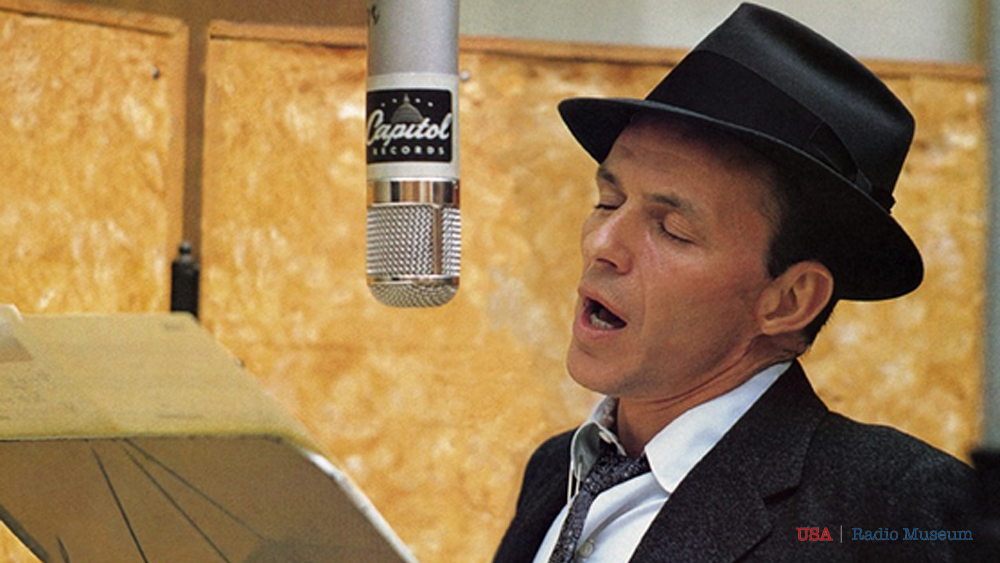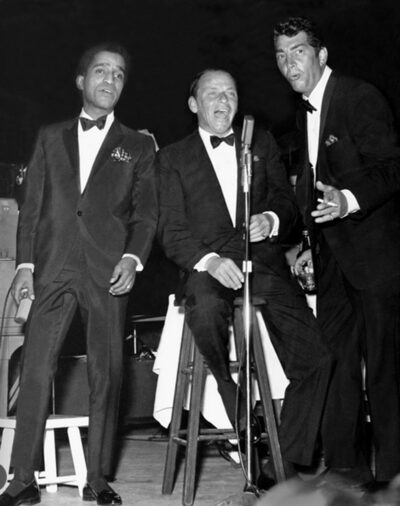The Voice That Defined an Era Early Life and Musical Beginnings Born Francis Albert Sinatra on December 12, 1915, in Hoboken, New Jersey, Sinatr
The Voice That Defined an Era
Early Life and Musical Beginnings
Born Francis Albert Sinatra on December 12, 1915, in Hoboken, New Jersey, Sinatra was the only child of Antonino “Marty” Sinatra and Natalina “Dolly” Garaventa. Raised in a tight-knit Italian-American community, he developed an early passion for music, influenced by artists like Bing Crosby and Al Jolson.
One of the most influential artists in Frank Sinatra’s early musical upbringing was Bing Crosby. Sinatra idolized Crosby, studying his phrasing, vocal control, and effortless delivery. Crosby’s smooth baritone voice and relaxed singing style revolutionized popular music in the 1930s, moving away from the rigid, operatic approach of earlier crooners.
Sinatra memorized Crosby’s songs, mimicked his style, and even credited him as the reason he pursued a singing career. Crosby’s ability to connect emotionally with audiences inspired Sinatra to develop his own intimate, conversational vocal technique, which later became his signature.
Additionally, Sinatra was influenced by jazz greats like Louis Armstrong and Billie Holiday. Armstrong’s swing phrasing and Holiday’s emotional depth helped Sinatra refine his ability to interpret lyrics with nuance and feeling
Despite struggling in school, Sinatra’s determination led him to pursue singing. His first breakthrough came when he joined The Hoboken Four, a local singing group that won a talent contest and toured briefly. This set him on a path toward becoming one of the most celebrated voices in music history.
The Rise to Stardom
 Sinatra’s journey to fame was anything but easy. Born into a working-class Italian-American family in Hoboken, New Jersey, he faced academic struggles and was expelled from high school due to his lack of interest in formal education. However, his passion for music was undeniable—he idolized Bing Crosby and spent hours memorizing songs, perfecting his phrasing, and developing his signature vocal style.
Sinatra’s journey to fame was anything but easy. Born into a working-class Italian-American family in Hoboken, New Jersey, he faced academic struggles and was expelled from high school due to his lack of interest in formal education. However, his passion for music was undeniable—he idolized Bing Crosby and spent hours memorizing songs, perfecting his phrasing, and developing his signature vocal style.
His mother, Dolly Sinatra, was a strong-willed woman who believed in her son’s talent. She used her political connections to help him secure early singing gigs, ensuring he had opportunities to perform. Sinatra’s charisma and confidence made him a natural performer, but he still had to fight for recognition.
Sinatra’s first taste of success came when he joined The Hoboken Four, a local singing group. They won a radio talent contest, which led to small touring opportunities. This experience gave Sinatra the confidence to pursue a solo career, but he knew he needed a big break to truly make it.
Determined to succeed, Sinatra worked as a singing waiter at the Rustic Cabin, a roadhouse in New Jersey. His performances caught the attention of Harry James, a well-known bandleader, who signed Sinatra to his orchestra in 1939. This was his first major step toward stardom.
Sinatra’s career skyrocketed when he joined Tommy Dorsey’s band in 1940. Dorsey’s smooth trombone playing influenced Sinatra’s breath control and phrasing, helping him refine his signature vocal style. His recordings with Dorsey, including I’ll Never Smile Again, became major hits, and Sinatra quickly became a teen idol.
However, Sinatra wanted creative freedom. In 1942, he made the bold decision to leave Dorsey’s band and go solo—a risky move that could have ended his career. Instead, it catapulted him to superstardom.
Sinatra signed with Columbia Records and became a sensation, especially among teenage fans known as “bobby soxers.” His heartfelt ballads and charismatic stage presence made him a national phenomenon. His concerts were met with hysterical screaming fans, a level of devotion rarely seen before in popular music.
By the mid-1940s, Sinatra was America’s biggest star, dominating the charts and starring in films. His ability to convey raw emotion through song set him apart, making him one of the most influential vocalists of all time.
Sinatra’s Early 1940s Breakthrough
At the start of the decade, Sinatra was still a rising star, having gained recognition as the lead vocalist for Harry James’ orchestra in 1939. However, his career truly took off when he joined Tommy Dorsey’s band in 1940. Dorsey’s smooth trombone playing influenced Sinatra’s breath control and phrasing, helping him refine his signature vocal style.
During his time with Dorsey, Sinatra recorded dozens of hits, including:
- I’ll Never Smile Again (1940) – His first No. 1 hit, staying atop the charts for 12 weeks.
- Imagination (1940) – A dreamy ballad showcasing Sinatra’s emotional depth.
- This Love of Mine (1941) – One of his earliest compositions, proving his songwriting talent.
Sinatra’s popularity skyrocketed, and by 1942, he was ready to go solo—a bold move that many believed would end his career. Instead, it catapulted him to superstardom.
The Bobby Soxer Phenomenon & Sinatra’s Solo Stardom
Sinatra signed with Columbia Records in 1943, launching his solo career with a string of hits that made him a national sensation. His smooth, heartfelt delivery resonated with young female fans, known as “bobby soxers”, who screamed, fainted, and mobbed his concerts—a level of hysteria rarely seen before in popular music.
His biggest hits of the mid-1940s included:
- All or Nothing at All (1943) – Originally recorded with Harry James in 1939, but became a massive hit upon re-release.
- You’ll Never Know (1943) – A romantic ballad that won an Academy Award for Best Original Song.
- Saturday Night (Is the Loneliest Night of the Week) (1944) – A swinging, upbeat tune that showcased Sinatra’s versatility.
- Nancy (With the Laughing Face) (1945) – A tender tribute to his daughter, Nancy Sinatra.
Sinatra’s concerts were chaotic, with thousands of fans lining up for hours just to catch a glimpse of him. His radio show, “Your Hit Parade,” further cemented his status as America’s favorite singer.
Sinatra’s Hollywood Stardom & Wartime Influence
By the mid-1940s, Sinatra had expanded into film, starring in musicals and romantic dramas that showcased his acting talent. His first major roles included:
- Step Lively (1944) – A musical comedy that proved Sinatra’s on-screen charisma.
- Anchors Aweigh (1945) – A box-office hit alongside Gene Kelly, featuring the famous animated dance sequence with Jerry the Mouse.
- Till the Clouds Roll By (1946) – A biographical musical, where Sinatra performed Ol’ Man River.
During World War II, Sinatra became a symbol of hope, performing for troops overseas and starring in patriotic films. Although he did not serve in the military due to a punctured eardrum, he actively supported the war effort through charity concerts and morale-boosting performances.
The Voice of Frank Sinatra (1946) & His First Album
In 1946, Sinatra released his debut album, The Voice of Frank Sinatra, one of the first concept albums in history. It featured lush orchestral arrangements and showcased his ability to convey deep emotion through song.
Key tracks from the album included:
- Try A Little Tenderness – A gentle, heartfelt ballad.
- Someone To Watch Over Me – A classic Gershwin tune, performed with intimate sincerity.
- You Go To My Head – A melancholic love song, highlighting Sinatra’s vocal control.
This album redefined popular music, proving that albums could be artistic statements rather than just collections of singles.
Sinatra’s Late 1940s Challenges & Career Shift
By the late 1940s, Sinatra’s career faced challenges. The rise of big band music and new crooners like Perry Como and Bing Crosby led to a decline in his popularity. His contract with Columbia Records began to stagnate, and his film career slowed.
Additionally, his marriage to Nancy Barbato ended in 1951, and his high-profile romance with Ava Gardner became tabloid fodder. These personal struggles, combined with changing musical trends, led many to believe Sinatra’s career was fading.
However, as history would prove, Sinatra was far from finished—his reinvention in the 1950s would mark one of the greatest comebacks in entertainment history.
Legacy of the 1940s
The 1940s established Sinatra as America’s first true pop idol. His smooth vocals, emotional delivery, and charismatic presence made him a cultural phenomenon, paving the way for future stars like Elvis Presley and The Beatles.
Sinatra’s Transition into the 1950s: Struggle, Reinvention & Triumph
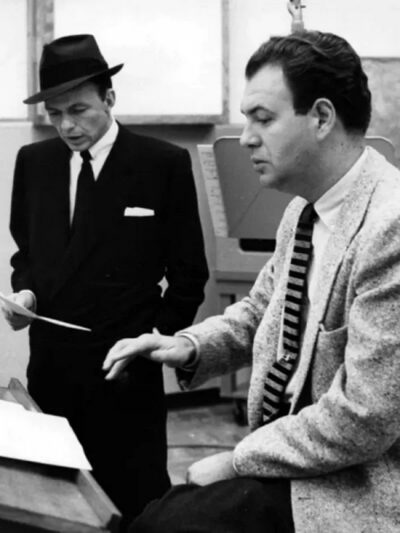 As the 1950s began, Sinatra’s career faced immense challenges. His record sales declined sharply, and his contract with Columbia Records ended in 1952. The music industry was shifting, with rock and roll and teen idols such as Elvis Presley taking center stage. Sinatra, once the most sought-after crooner, was now struggling to stay relevant.
As the 1950s began, Sinatra’s career faced immense challenges. His record sales declined sharply, and his contract with Columbia Records ended in 1952. The music industry was shifting, with rock and roll and teen idols such as Elvis Presley taking center stage. Sinatra, once the most sought-after crooner, was now struggling to stay relevant.
His film career stalled, and his marriage to Ava Gardner became a tabloid spectacle. With financial troubles mounting and Hollywood turning its back on him, Sinatra was labeled as a fading star. Many thought his career was over.
The Career-Saving Role: “From Here to Eternity” (1953)
Refusing to fade away, Sinatra fought for the role of Private Angelo Maggio in From Here to Eternity (1953). Against all odds, he secured the role—despite skepticism from Hollywood executives. His gritty, emotional performance won him the Academy Award for Best Supporting Actor, proving he was still a force to be reckoned with. This victory restored his reputation, marking one of the greatest comebacks in entertainment history.
Capitol Records and the Sinatra Renaissance
Following his film success, Sinatra signed with Capitol Records in 1953, ushering in what many consider his golden era of music. Collaborating with Nelson Riddle, he developed a swinging, jazz-influenced sound that revitalized his artistry.
His Capitol albums became instant classics, including:
- In the Wee Small Hours (1955) – One of the first concept albums, delving into heartache and introspection.
- Songs for Swingin’ Lovers! (1956) – A lively, romantic collection, featuring I’ve Got You Under My Skin.
- Come Fly With Me (1958) – A stylish travel-themed masterpiece, capturing the essence of Sinatra’s worldly charm.
Sinatra’s Late 1950s Dominance
By the late 1950s, Sinatra had completely reinvented himself, becoming the king of entertainment. He ruled Las Vegas, headlining shows at the Sands Hotel alongside his Rat Pack comrades, Dean Martin and Sammy Davis Jr.. His film career flourished with hits like:
- The Man with the Golden Arm (1955) – A hard-hitting drama, earning him an Oscar nomination.
- Guys and Dolls (1955) – A musical smash, co-starring Marlon Brando.
- Pal Joey (1957) – A Golden Globe-winning role, showcasing Sinatra’s effortless charisma.
By 1959, Sinatra had solidified himself as an immortal icon—the biggest star in music, film, and live entertainment.
The Golden Years of Music
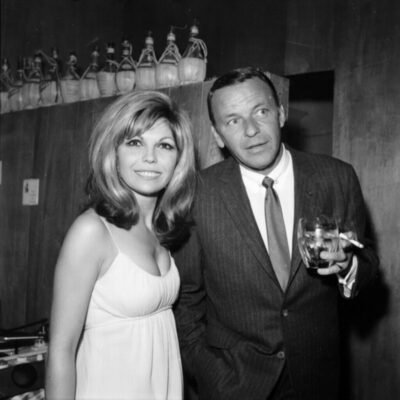 In the 1950s, Sinatra signed with Capitol Records, working with Nelson Riddle to produce timeless albums like In the Wee Small Hours (1955) and Songs for Swingin’ Lovers! (1956). His voice embodied elegance, sophistication, and deep emotion, making him an enduring figure in American culture.
In the 1950s, Sinatra signed with Capitol Records, working with Nelson Riddle to produce timeless albums like In the Wee Small Hours (1955) and Songs for Swingin’ Lovers! (1956). His voice embodied elegance, sophistication, and deep emotion, making him an enduring figure in American culture.
By the 1960s, Sinatra founded Reprise Records, giving him creative freedom. Albums like Ring-A-Ding-Ding! (1961) and Sinatra at the Sands (1966), recorded live with Count Basie, solidified his place as a true legend.
One of his most memorable duets during this era was with his daughter, Nancy Sinatra. In 1967, they recorded Somethin’ Stupid, which became a No. 1 hit, showcasing their natural chemistry and vocal harmony.
Sinatra’s Transition into the 1960s: Reprise Records & Creative Control
At the dawn of the 1960s, Sinatra made a bold move—he left Capitol Records and founded Reprise Records in 1960. This decision gave him complete artistic control, allowing him to shape his own musical direction and sign artists who shared his vision.
Under Reprise, Sinatra released some of his most celebrated albums, including:
- Ring-A-Ding-Ding! (1961) – A high-energy, swinging album that set the tone for his new era.
- Sinatra-Basie: An Historic Musical First (1962) – A legendary collaboration with Count Basie, blending jazz and big band sounds.
- It Might as Well Be Swing (1964) – Another Basie collaboration, featuring the classic Fly Me to the Moon.
- September of My Years (1965) – A deeply reflective album, earning Sinatra a Grammy for Album of the Year.
- Sinatra at the Sands (1966) – A live masterpiece, recorded at the Sands Hotel with Count Basie and arranged by Quincy Jones.
- Francis Albert Sinatra & Antonio Carlos Jobim (1967) – A bossa nova-inspired album, showcasing Sinatra’s versatility.
- Francis A. & Edward K. (1968) – A collaboration with Duke Ellington, blending jazz and Sinatra’s signature style.
Reprise Records: Sinatra’s Vision for Artistic Freedom
Sinatra launched Reprise Records in 1960, offering artists more control over their music. It became home to a diverse range of acts, including:
- Dean Martin – Released classics like Dream with Dean (1964).
- Dino, Desi & Billy – A pop-rock trio featuring Dean Martin’s son Dino, best known for I’m a Fool (1965).
- Trini Lopez – Famous for If I Had a Hammer (1963).
- The Kinks – Their U.S. releases were handled by Reprise, including You Really Got Me (1964).
- Lee Hazlewood & Nancy Sinatra – Hazlewood produced many of Nancy’s biggest hits, including These Boots Are Made for Walkin’ (1966).
- Kenny Rogers & The First Edition – Known for Just Dropped In (To See What Condition My Condition Was In) (1967).
Although Sinatra later sold Reprise to Warner Bros. in 1963, the label thrived, signing legendary artists like Jimi Hendrix, Fleetwood Mac, and Neil Young in later decades.
“Some Velvet Morning”: A Psychedelic Masterpiece
Among the standout recordings from Reprise was Nancy Sinatra’s haunting duet with Lee Hazlewood, “Some Velvet Morning”. Released in late 1967, the song blended psychedelic rock and country influences, creating a hypnotic and mysterious atmosphere.
- The shifting time signatures—Hazlewood’s deep vocals in 4/4 and Sinatra’s dreamy verses in 3/4—made it one of the most unusual duets in pop history.
- The lyrics referenced Greek mythology, specifically the character Phaedra, adding an air of mystique.
- The song peaked at No. 26 on the Billboard Hot 100 in February 1968, solidifying its place as one of the era’s most enigmatic hits.
“Some Velvet Morning” remains a fascinating, ethereal track, showcasing Nancy Sinatra and Lee Hazlewood’s unique chemistry and innovative sound.
Sinatra’s talent extended beyond music—his film career flourished in the 1950s and 1960s. His breakout role in From Here to Eternity (1953) won him an Academy Award, proving his skills as an actor. He went on to star in classics like Guys and Dolls (1955) and The Manchurian Candidate (1962).
During this time, Sinatra became the leader of The Rat Pack, alongside Dean Martin, Sammy Davis Jr., Joey Bishop, and Peter Lawford. Their performances in Las Vegas, particularly at the Sands Hotel, set the standard for effortless cool, blending music, comedy, and charisma.
Sinatra’s Cultural Influence & Political Connections
Sinatra’s influence extended beyond music—he was deeply involved in politics and social movements. He was a close friend of President John F. Kennedy, playing a key role in his 1960 election campaign. Sinatra even organized Kennedy’s inaugural gala, featuring performances from Hollywood’s biggest stars.
However, their friendship soured when Kennedy distanced himself from Sinatra due to his alleged ties to organized crime. Despite this, Sinatra remained a powerful figure, using his platform to support civil rights and advocate for racial equality.
Sinatra’s Film Career in the 1960s
Sinatra continued to thrive in Hollywood, starring in major films that showcased his acting range:
- Ocean’s 11 (1960) – The ultimate Rat Pack film, featuring Dean Martin, Sammy Davis Jr., and Peter Lawford.
- The Manchurian Candidate (1962) – A political thriller, widely regarded as one of his best performances.
- Tony Rome (1967) – A detective noir film, launching Sinatra’s role as a tough private investigator.
- The Detective (1968) – A gritty crime drama, proving Sinatra’s ability to tackle serious roles.
Sinatra’s Late 1960s Shift and “My Way”
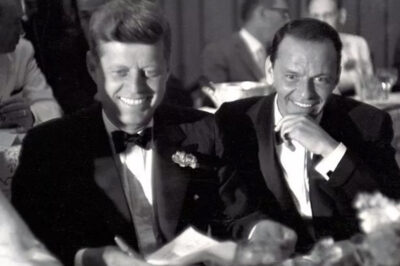 “My Way” is one of Sinatra’s most iconic songs, written for him by Paul Anka in 1968. Originally a French tune (Comme d’habitude), Anka reworked it into a powerful anthem of individuality and reflection. Though Sinatra wasn’t fond of the song, it became his signature piece, embodying his legacy of determination and resilience.
“My Way” is one of Sinatra’s most iconic songs, written for him by Paul Anka in 1968. Originally a French tune (Comme d’habitude), Anka reworked it into a powerful anthem of individuality and reflection. Though Sinatra wasn’t fond of the song, it became his signature piece, embodying his legacy of determination and resilience.
While My Way peaked at No. 27 on the Billboard Hot 100, its impact far outweighed its chart position. It remained on the UK charts for 75 weeks, becoming one of the longest-charting songs in British history. Even today, it is recognized as one of the greatest farewell songs of all time.
Legacy of the 1960s
The 1960s solidified Sinatra’s status as a cultural icon. He dominated music, film, and business, proving his ability to adapt and thrive in an ever-changing industry. His collaborations, political influence, and artistic reinvention ensured that he remained at the forefront of entertainment.
The Chairman of the Board: A Name That Stuck
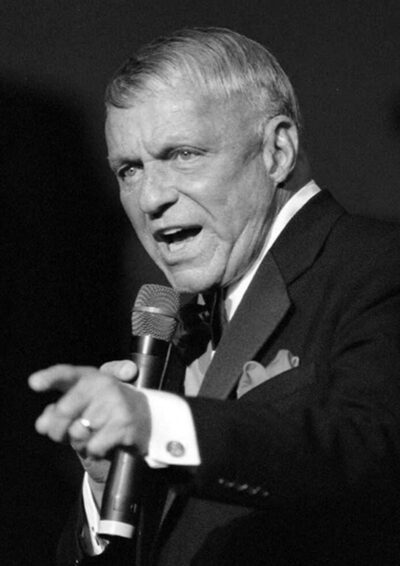 Sinatra’s leadership in the industry earned him the legendary title “The Chairman of the Board.” After founding Reprise Records in 1960, he gave artists unprecedented creative freedom, revolutionizing the recording industry.
Sinatra’s leadership in the industry earned him the legendary title “The Chairman of the Board.” After founding Reprise Records in 1960, he gave artists unprecedented creative freedom, revolutionizing the recording industry.
The title was popularized by New York radio host William B. Williams of WNEW-AM, who frequently referred to Sinatra as “The Chairman” on air. While the name reflected his power and influence, Sinatra reportedly disliked it—but it remained one of his defining monikers.
Frank Sinatra’s Music Awards & Achievements
Sinatra’s legacy is backed by prestigious honors, solidifying his place as one of the greatest voices of all time:
- Grammy Awards: Sinatra won 11 Grammy Awards, including three Album of the Year wins. He also received a Lifetime Achievement Award (1966) and a Grammy Legend Award (1995).
- Hollywood Walk of Fame: He holds three stars—one for music, one for film, and one for television.
- Kennedy Center Honors (1983)—celebrating his impact on the performing arts.
- BBC Radio 2’s “Greatest Voice of the 20th Century” (2001)—a testament to his enduring influence.
Frank Sinatra’s Final Years & Lasting Legacy
As Frank Sinatra entered the twilight of his career, his status as a cultural icon remained untouched. In 1995, his 80th birthday was celebrated with Sinatra: 80 Years My Way, a grand televised tribute featuring performances and heartfelt dedications from legends like Tony Bennett, Bono, and Ray Charles. That same year, Sinatra made his final public appearance, marking the end of an era.
Frank Sinatra passed away in Los Angeles, California, on May 14, 1998. He died at Cedars-Sinai Medical Center after suffering a heart attack. His wife, Barbara Sinatra, was by his side at the time.
Sinatra was later laid to rest at Desert Memorial Park in Cathedral City, California. His headstone is engraved with the lyrics to one of his most famous songs: “The Best Is Yet to Come”.
Sinatra’s Legacy Lives On: “Mr. Sinatra: His Music, His Life”
While Frank Sinatra’s career spanned decades, his influence has never faded. Thanks to passionate music historians and broadcasters, his voice still echoes through the airwaves. One shining example is Jim Hampton’s weekly radio show, “Mr. Sinatra: His Music, His Life”, streaming every Wednesday from 6 p.m. to 8 p.m. on Real Oldies Radio via iHeart Radio and Live365.com (click or tap the link inside the ‘Mr. Sinatra’ frame).
Hampton takes listeners on a journey through Sinatra’s career, spanning from the 1940s through the 1960s and beyond. Each show explores Sinatra’s evolution as an artist, his rare recordings, and his most beloved hits.
A Timeless Legend
Frank Sinatra’s influence transcends generations. His music plays on, his influence lives in the voices of modern artists, and his legacy is honored by fans, historians, and passionate broadcasters like Jim Hampton. For those who listen—whether for nostalgia, admiration, or curiosity—Sinatra’s message is clear:
“The Best Is Yet to Come.”
_____________________
A USARM Viewing Tip: On your mobile or tablet device? Finger-tap all the above images inside the post and stretch image across your device’s screen for LARGEST digitized view.

